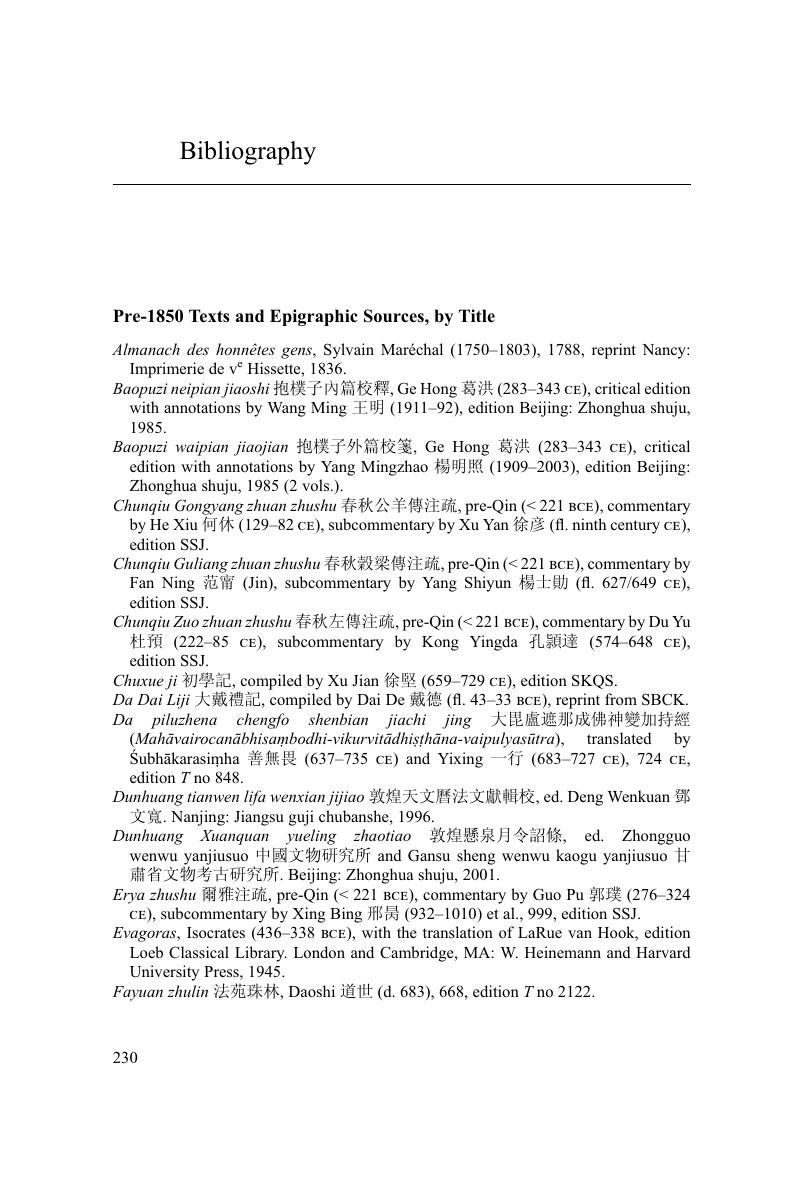Book contents
- Astral Sciences in Early Imperial China
- Astral Sciences in Early Imperial China
- Copyright page
- Dedication
- Contents
- Figures
- Acknowledgements
- Introduction
- 1 The World Below
- 2 Observing the Signs
- 3 Granting the Seasons
- 4 Reverent Accordance with Prodigious Heaven
- 5 What the Ancients Had Yet to Learn
- 6 Conclusion
- Appendix Co-ordinates
- Abbreviations
- Bibliography
- Index
- References
Bibliography
Published online by Cambridge University Press: 27 July 2017
- Astral Sciences in Early Imperial China
- Astral Sciences in Early Imperial China
- Copyright page
- Dedication
- Contents
- Figures
- Acknowledgements
- Introduction
- 1 The World Below
- 2 Observing the Signs
- 3 Granting the Seasons
- 4 Reverent Accordance with Prodigious Heaven
- 5 What the Ancients Had Yet to Learn
- 6 Conclusion
- Appendix Co-ordinates
- Abbreviations
- Bibliography
- Index
- References
Summary

- Type
- Chapter
- Information
- Astral Sciences in Early Imperial ChinaObservation, Sagehood and the Individual, pp. 230 - 251Publisher: Cambridge University PressPrint publication year: 2017

